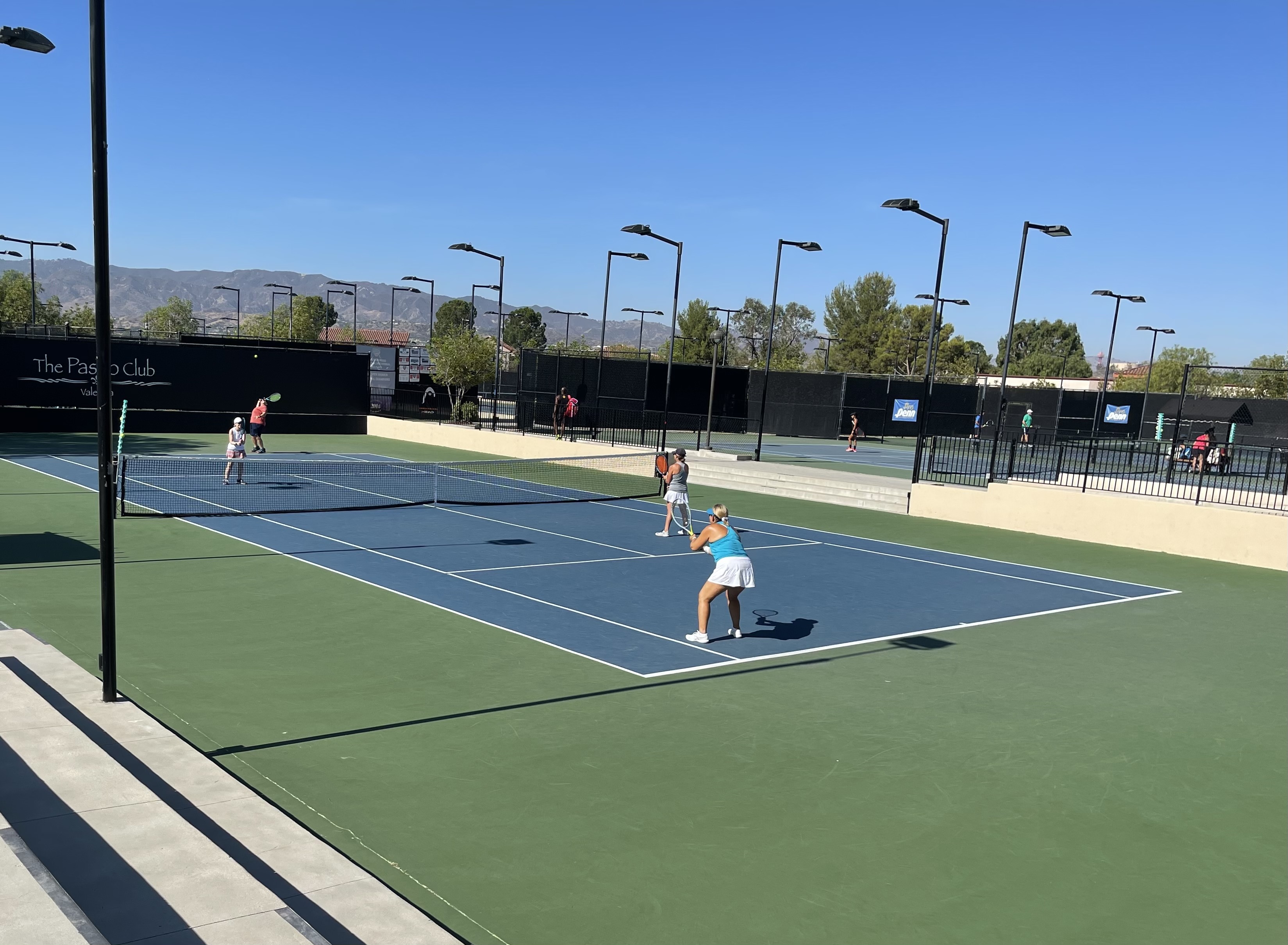
It is essential to understand the basic strategy and patterns in doubles.
To execute any of that each one of the players have to be familiar with their tasks.
The server, receiver, the server’s partner and the receiver's partner have different assignments and knowing them is crucial in becoming a successful doubles team.
But before I get into the playing role of each player here is the mantra that doubles players should live by:
CONTROL THE NET and CONTROL THE CENTER OF THE COURT!
Staying at the back court allows your opponents to take over the net and put them in an offensive position by hitting winning volleys. The team that manages to be first at the net is the team that is most likely to win the point. Having said that, it is absolutely crucial that the players at the net are working in synchrony and don’t leave a large gap between them. That will create a visual target for the opposing team threading winners down the middle.
The server’s task:
The server is the one who sets up the play. The outcome of the point depends on how close the server comes in behind his serve. Mastering a good second serve will give the server more time to close in and also will yield higher percentage serves.
The placement of the serve is a big tactical factor in setting up the volley. By serving to the middle of the court on the deuce court and to the players body on the ad side the server will not allow sharp angle reruns and make it easier to hold serve.
The next job for the server is to hit the first volley down the middle unless of course he is able to hit an angle with a winning volley. Hitting the first volley down the middle will eliminate any angles from the opponent forcing them to hit back to the net players or lob.
The following quote is from coach Chuck Kriese (former coach of Clemson university, 6 time winner of NCAA): “The server should assume responsibility for all first volleys to allow the net player to be aggressive”.
Unless a poach has been called, the net guy should feel free to poach on any floaters but if he can’t hit a winner it is the server’s job to back him up. Remember “the server is the backup man and his partner is the cutoff man”.
The receiver's task:
The most important requirement from the receiver is to keep the ball away from the net player. Hitting the ball to where it came from is the safest choice and has the highest percentage of good returns.
Changing direction on the return of serve on weak second serves can be used once in a while but generally it is risky and in most cases it will set the net player up.
When dealing with an aggressive net player (“poacher”) an occasional down the line return is a deterring tactical measure, keeping the net player “honest” (not poaching).
The next tactical option for the receiver is to lob over the net player and charge the net. This will neutralize a net rushing server and put the opposing team on the defense by taking over the net.
Another crucial task for the receiver is to come in on weak serves thus not allowing the server to control the net.
The receiver’s job is also to call the formation on the return of serve. It would be a wise decision for both players to stay back, facing first serves from a “big server” and moving in on the first set up opportunity they get.
The server’s partner task:
The most important task of the server’s partner is to stay active at the net which means either poaching or faking. By not doing so he becomes a non factor and pretty much takes himself out of the game.
His other task is to direct the server which way to serve, either with signals or verbally, this will set him up for poaching while the server will be his back up system. Doing so verbally is preferred to avoid unnecessary miscommunications.
There are several variations of doubles formats, Australian, I formation, the conventional play or both players on the back court. It is up to the server’s partner to dictate the play.
The receiver’s partner’s task:
The receiver’s partner plays a major role in breaking serve. Positioned on the service line and squaring off with the opposing net player (who has the first play on the ball after the serve return) will allow him to move forward toward the net player to cut off weak volleys.
If the receiver returns low at the server’s feet then his partner must cut off the server’s volleys that most likely will have high trajectory and travel through the center of the court. This will put extra pressure on the server and could lead to a service break.
The receiver’s partner may join the receiver on the back court when facing a strong server, as this tactical variation will give the opponent a different look and may throw their rhythm off.
Here are the most commonly asked questions about playing doubles:
1.When a right handed and a left handed team play together, who plays on what side?
Answer: The right handed player should play the ad side and the lefty the deuce side, this way the center is covered by forehands.
- How to decide who plays the ad side or the deuce side when both players are same handed?
Answer: Most points in tennis are won or lost on the ad side: 0:40, 40:0, and all the ads. On the deuce side points can be won or lost only in two situations: 15:40 and 40:15, therefore the stronger returner should play the ad side.
3.What is the best strategy against ”pushers”?
Answer: The word pushers says it all, it means these players are lacking power game .Take the net at any opportunity you get and have a volley feast at the net.
- “I’m worried about lobs when I play at the net, should I stay back?”
Answer: Absolutely not! And the call for help “YOURS” is not a solution either. You should be responsible for lobs that go over your head and the way to go about it is by early decision making. The earlier you react to a lob the better, every split second matters. All you have to do is back up to the service line, from there another step backwards if necessary will allow you to pick off most lobs simply because at that point lobs are on the downward trajectory.
At your service!
Jen Azevedo is a tennis professional, pickleball professional, personal trainer, group exercise instructor, and the general manager of the Paseo Club. She loves the community at the Paseo Club and that it is also a safe and fun place for her daughter. Jen’s favorite activities are joining her tribe for trail races or her partners for tennis matches. Occasionally Jen slows down to relax with a book — she reads over 100 a year!
Topics:

